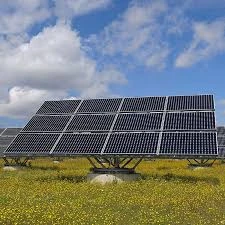Dimensions of a 450 Watt Solar Panel for Efficient Energy Solutions
Understanding the Dimensions of a 450 Watt Solar Panel A Comprehensive Overview
As the world shifts increasingly towards renewable energy sources, solar panels have become a focal point in efforts to harness solar energy for both residential and commercial use. One of the most popular options among solar enthusiasts is the 450 watt solar panel. Understanding the dimensions and specifications of these panels is crucial for installation and performance.
What is a 450 Watt Solar Panel?
A 450 watt solar panel is designed to convert sunlight into electricity with a maximum output of 450 watts under standard testing conditions (STC). These panels are typically monocrystalline or polycrystalline, materials that influence their efficiency and energy output. The wattage signifies the amount of power the solar panel can generate, making it a significant factor when considering energy needs, available space, and overall system design.
Dimensions of a 450 Watt Solar Panel
The physical dimensions of a 450 watt solar panel can vary based on the manufacturer and the technology used. However, most panels in this wattage range tend to be approximately 1.7 to 2.0 meters in length and 1.0 to 1.2 meters in width. Such dimensions make it feasible for most rooftops and ground-mounted systems. For instance, a common size might be around 1.76 meters by 1.04 meters, allowing for a relatively compact installation while maximizing power output.
The thickness of these panels is also an important aspect to consider. Typically, the standard thickness ranges from about 30 to 40 millimeters. This thickness ensures durability, enabling the panels to withstand various weather conditions while maintaining efficiency.
Why Dimensions Matter
450 watt solar panel dimensions

Understanding the dimensions of a solar panel is essential for several reasons
1. Space Considerations Knowing the size of a 450 watt solar panel helps in assessing space requirements for installation. Homeowners or businesses looking to go solar must evaluate their rooftops or land area to determine how many panels can fit and how they can be optimally arranged.
2. Weight Management The weight of each 450 watt solar panel can also vary, typically ranging from 20 to 25 kilograms. This weight impacts the structural integrity of rooftops and may require additional reinforcements if many panels are installed.
3. Electrical System Design The dimensions and wattage of the solar panels also influence the overall electrical system design. For example, when designing a solar array, not only must the power output be calculated, but also the space available, the angle of installation, and the positioning for optimal sun exposure.
4. Aesthetic Considerations For many homeowners, the aesthetic impact of solar panels is a significant factor. Understanding the dimensions assists in selecting a panel that complements the existing design and architecture of a building.
Conclusion
In conclusion, the 450 watt solar panel stands out as a robust choice for those looking to invest in solar energy. Understanding its dimensions is crucial for many aspects of installation and performance, from space management to aesthetic integration. As technology continues to evolve, the efficiency and physical designs of solar panels will likely change, but the fundamental value of understanding these dimensions will remain essential for any solar energy project. Whether for a residential rooftop or a large-scale installation, being informed about the specifications of solar panels can lead to better decisions, maximizing both energy output and investment potential.
-
String Solar Inverter: The High-Efficiency Solution for Smart Solar EnergyNewsJul.14,2025
-
Revolutionizing Rooftop Energy with the Power of the Micro Solar InverterNewsJul.14,2025
-
Power Independence with Smart Off Grid Solar Inverter SolutionsNewsJul.14,2025
-
On Grid Solar Inverter: Powering the Future with Smart Grid IntegrationNewsJul.14,2025
-
Monocrystalline Solar Panels: High-Efficiency Power for the Future of Clean EnergyNewsJul.14,2025
-
Bifacial Solar Panel: A Smarter Investment for Next-Generation Energy SystemsNewsJul.14,2025







